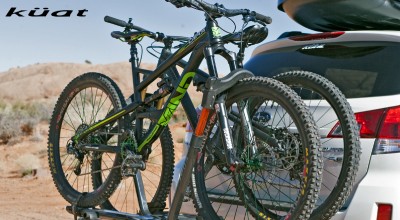Hardtail vs. Full Suspension Mountain Bikes

Mountain biking is an exciting way to get outside, explore nature, and push your physical limits. When selecting a new mountain bike, riders must decide between a hardtail or full suspension. Our Biking Experts outline the pros and cons of each type considering factors like how you’re riding, where you’re riding, and your budget so that you can find your ideal mountain bike.
Hardtail Mountain Bikes
Hardtail mountain bikes have a simpler design than full suspension, featuring front suspension but no rear suspension. This design offers several benefits that make hardtail bikes a popular choice for many riders.
Pros of Hardtails:
- Efficiency: Hardtail bikes are known for their pedaling efficiency on smooth terrain. The absence of rear suspension means that more energy from each pedal stroke is transferred directly to the rear wheel, allowing riders to maintain speed and tackle climbs more efficiently.
- Maintenance: Hardtails require less maintenance than full-suspension bikes due to their simpler design and fewer moving parts.
- Cost: Hardtail mountain bikes are generally more affordable than full-suspension bikes, making them a more budget-friendly option for those entering the mountain biking world.
- Versatility: Hardtail bikes are versatile and can handle various terrains like smooth trails, gravel paths, and cross-country tracks. They’re ideal for riders who enjoy climbing and covering long distances.
Foam Water Mats & Accessories.
Cons of Hardtails:
- Comfort: Without rear suspension, hardtails can result in a rougher ride, especially on rocky or technical terrain. Riders are more likely to experience more bumps and vibrations which can lead to discomfort on longer rides.
- Control: Hardtail bikes may lack the same level of traction and control over obstacles like rocks and roots without rear suspension to absorb impacts, impacting rider confidence on tougher trails.
Full Suspension Mountain Bikes

Full-suspension mountain bikes feature both front and rear suspension systems, which work together to absorb impacts and provide a smoother ride. Many mountain bikers opt for a full-suspension bike for this reason.
Pros of Full Suspensions:
- Comfort: The rear suspension absorbs bumps and vibrations, providing a smoother ride, especially on rough terrain. This can reduce fatigue, allow for longer rides, and be more suitable for beginners just starting out.
- Control: These bikes offer enhanced traction and control over obstacles, keeping the wheels in contact with the ground for better stability and confidence.
- Adjusting: Full-suspension bikes offer more flexibility for adjustment options. Both suspensions can be adjusted for weight, riding style, and type of terrain.
- Versatility: Full suspensions are versatile when it comes to tackling challenging terrains, descents, and jumps.
Despite their many advantages, full-suspension bikes also come with some drawbacks.
Cons of Full Suspensions:
- Cost: In general, full-suspension bikes are pricier due to their more complex design and additional components.
- Maintenance: Full suspension bikes need more upkeep for their dual suspension systems compared to hardtails, ensuring optimal performance and longevity.
- Weight: Full suspension bikes are heavier than hardtails because of the rear suspension system, affecting climbing efficiency and acceleration, especially uphill.

Choosing between a hardtail and a full-suspension mountain bike depends primarily on your riding style and terrain. Hardtail bikes prioritize efficiency, simplicity, and affordability, while full-suspension bikes offer added comfort, control, and versatility on challenging trails. Consider your budget, riding goals, and desired riding experience when choosing your new mountain bike.
Have more questions before buying a mountain bike? Contact your nearest WITZENBERG to speak with one of our Bike Experts!


